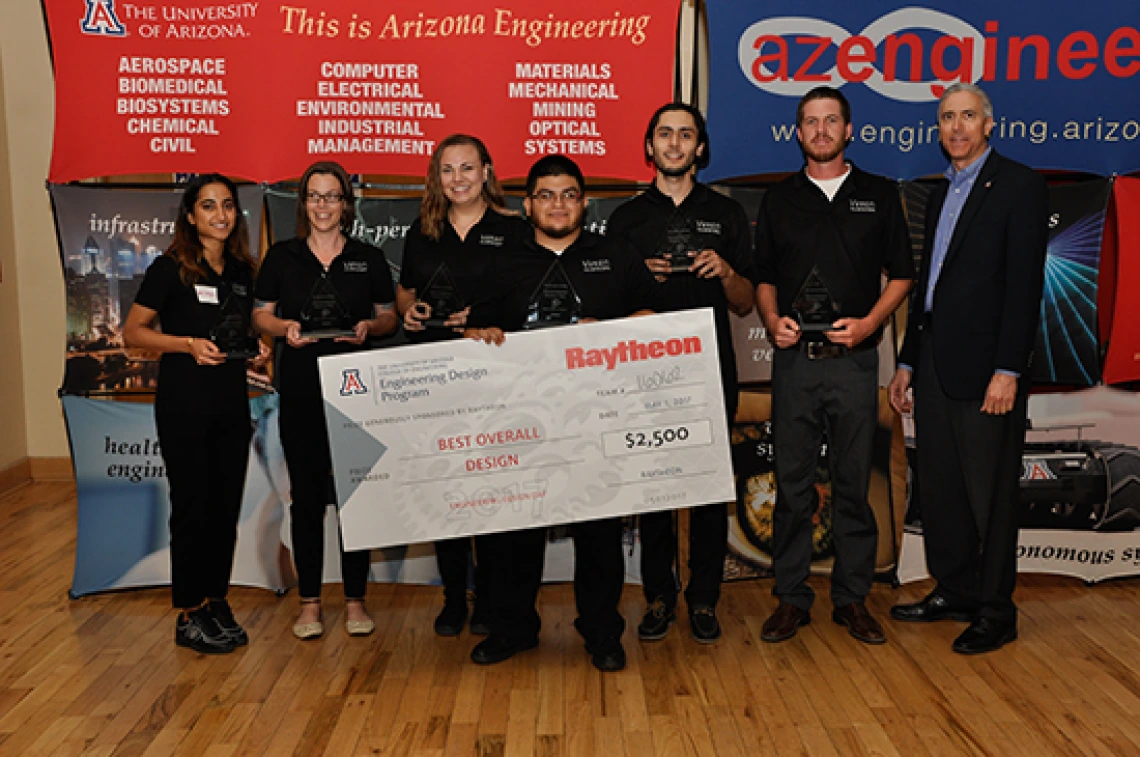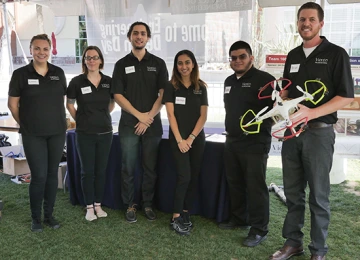Pollinator Drone for Date Palms Takes Top 2017 Prize

Project Title: Autonomous Aerial Pollination of Medjool Date Trees
Team 16062 Members:
Fatema Alabdullah, systems and industrial engineering
Victor Cortez, systems and industrial engineering
Sara Harders, biosystems engineering (team lead)
Ricardo Jiménez, biosystems engineering
Brian Normandeau, biosystems engineering
Emma Skidmore, biosystems engineering
Sponsor: UA Department of Agricultural and Biosystems Engineering
Project Challenges Team to Expand Skill Set

Members of Team 16062 may have been out of their element with welding, machining, wiring and coding, but they worked overtime to develop new skills and emerged victorious on Design Day 2017.
The six students created a more efficient, semi-autonomous pollination drone for Medjool date palms for the Gowan Company in Yuma, Arizona, and won the $2,500 Raytheon Award for Best Overall Design.
For most teams, passing the Engineering Design Program critical design review means it’s time to order parts. For Team 16062, it meant it was time to make parts, and team members met the challenges with broad smiles and hearty laughter.
They spent many weeks during the spring semester in what team lead Sara Harders called “the learning curve phase,” including “accidentally melting things” in the welding process.
From Low Tech to High Tech
Medjool date growers already use a low-tech pollination system with their high-tech drones, which carry a nylon stocking filled with pollen over female trees, and the wind blows the pollen onto the date palms. Farmers approximate wind patterns by kicking dirt into the air, then the drone pilot estimates where the pollen will fall from the way the dirt falls.
Team 16062’s semi-autonomous system requires only one operator on the ground. A user interface integrates data from a camera, weather stations and ground control to determine flower maturity and ideal flight path, and to produce collision avoidance warnings.
The system includes an automated egg-size pollinator that protects spores from inclement weather and drops a precise payload, reducing waste. The entire assembly – including the drone – meets a strict weight limit of 1,200 grams, or 2.64 pounds. During each flight, the drone pollinates 12 trees in a quarter-acre plot.
Long-Distance Collaboration
Unlike most UA Engineering Design teams, 16062 wasn’t exclusively composed of students in Tucson. The five Tucson students collaborated with Yuma-based classmate Victor Cortez, a systems and industrial engineering major, and UA faculty in Yuma. The team also used laboratory and shop facilities in both locations.

